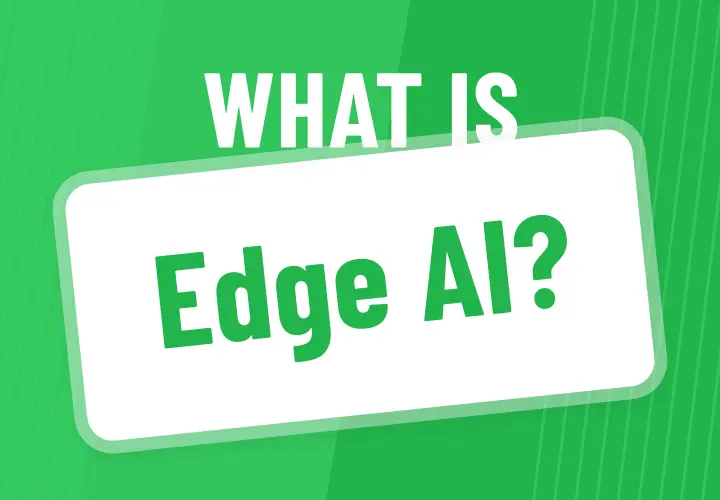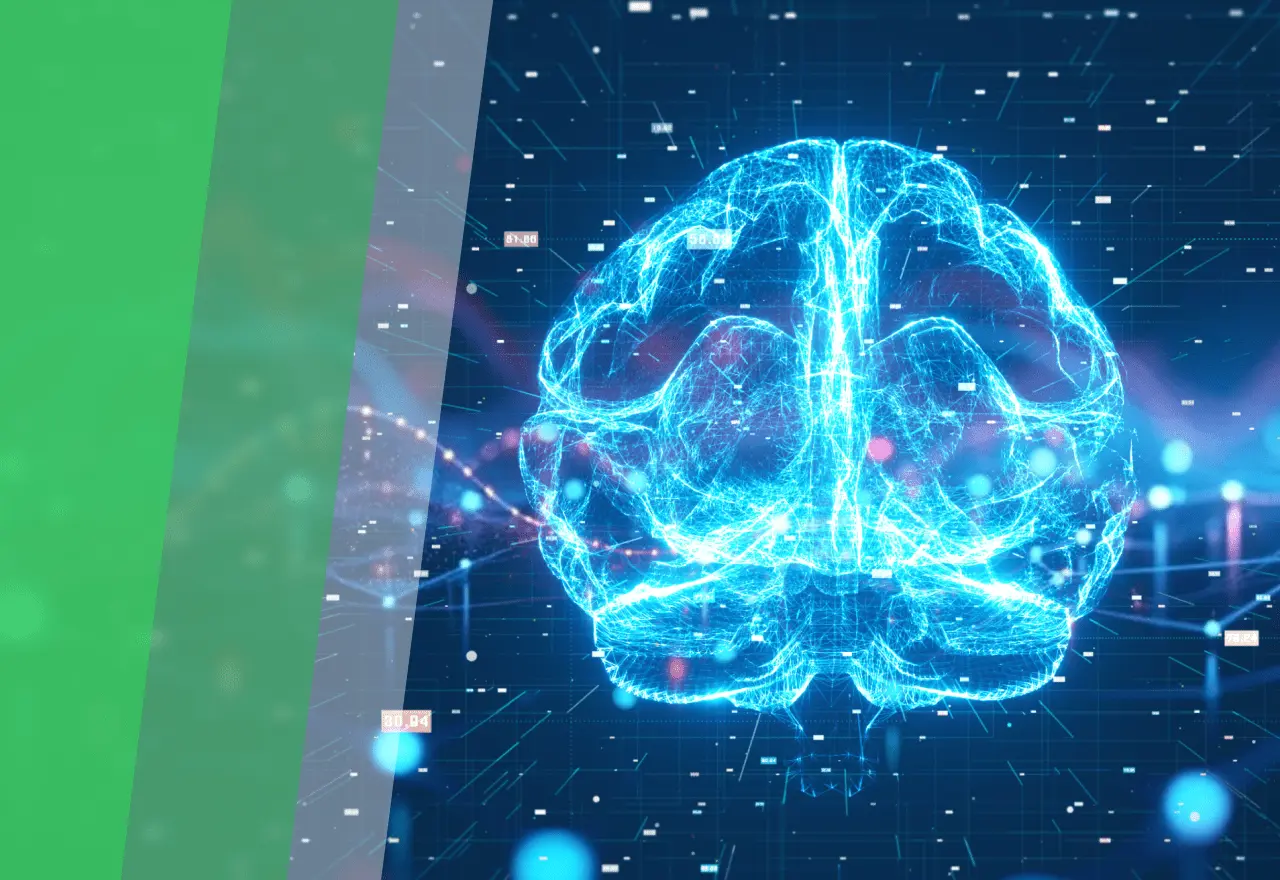AI Trends 2025–2030: A Strategic Overview for Decision-Making
Table of contents
- AI Trends 2025–2030
- 1. The Era of Autonomous AI Agents
- 2. The Integration of AIOps and Operational Excellence
- 3. The Evolution of Foundation Models and Multimodality
- 4. The Shift to Edge AI and Distributed Intelligence
- 5. AI Cybersecurity and GANs
- 6. Priority on Authenticity, Ethics, and Synthetic Data
- Conclusion: Strategic Readiness for 2030
- Final Recommendations
- Key Actions for Getting Started (Universal Steps)
The period of 2025–2030 marks a time of radical autonomization, where AI systems will transition from being support tools to independently managing critical operational processes. Strategic priorities, including the shift to Autonomous AI Agents and the integration of AIOps, are mandatory conditions for achieving impeccable operational efficiency. With market potential expected to grow by 35.9% by 2030, the time to act is now.
Read the full article to explore the six key AI trends shaping the next decade and discover the strategic 12-month action plans designed for your business.
AI Trends 2025–2030
1. The Era of Autonomous AI Agents
The End of Routine Work. In 2025, AI is no longer a passive tool in the user’s hand. We are entering an era where digital agents take over the planning, coordination, and execution of complex, end-to-end workflows.
Key Shift: Autonomous AI Agents, capable of planning and executing complex workflows, represent the next evolutionary step. Generative AI already increases the productivity of business users by an average of 66%, proving the effectiveness of delegating routine operations to AI systems.
Perspectives to 2030: By 2030, these agents will evolve from simple tools into collaborative team units, forming intricate multi-agent ecosystems. The future relies on new protocols, such as Agent-to-Agent (A2A), allowing agents to seamlessly coordinate, negotiate, and share context across different platforms. This shift will enable agents to handle sophisticated tasks, make semi-autonomous decisions in 15–20% of routine workplace processes by 2028, and drive up to a $5 trillion opportunity in global commerce.
Practical Example (Finance): An AI agent, acting as an "Autonomous Credit Officer," independently extracts data from the CRM, requests credit history, uses a multimodal model to evaluate documents, makes the decision, and automatically sends the offer.
| Category | Agent Action Plan (12 Months) |
| Innovators | Scale Autonomous Agent projects and establish a dedicated Agent Center of Excellence (CoE). |
| Strategic Followers | Train personnel to work with AI Agents and integrate off-the-shelf solutions from vendors. |
| Cautious Integrators | Use existing generative AI tools to increase personal productivity. |
2. The Integration of AIOps and Operational Excellence
Inability to Manage Complexity. Every unplanned outage or slow response to a failure results in direct financial losses and reputational damage. Our IT infrastructure has become too complex to be managed by humans. Only those who delegate system management to the system itself will survive.
Key Shift: Delegation of infrastructure management to the system. The application of AIOps (AI for IT Operations) provides predictive and automatic infrastructure management, helping to reduce unplanned downtime by 70–75% and lower maintenance costs by 25–30%.
Perspectives to 2030: By 2030, AIOps will become an essential component of all critical systems, transforming IT infrastructure into a self-healing organism. The combination of AIOps with autonomous agents will allow systems to autonomously deploy, optimize, and secure their environments, freeing engineers for strategic planning.
Practical Example (Telecom): The AIOps system detects abnormal patterns, triggers a root cause analysis, autonomously isolates the failing microservice, reroutes traffic to a backup cluster, and automatically opens a ticket.
| Category | AIOps Action Plan (12 Months) |
| Innovators | Develop and implement a proprietary predictive AIOps model integrated with autonomous agents for system self-healing. |
| Strategic Followers | Implement AIOps to improve stability and predictive infrastructure management. |
| Cautious Integrators | Launch a pilot project to automate incident handling and Root Cause Analysis (RCA) using off-the-shelf AIOps tools. |
3. The Evolution of Foundation Models and Multimodality
Universal Intelligence. New product development or market analysis no longer requires fragmented, specialized AI solutions. The new generation of universal Foundation Models (FM) blurs the boundaries between data types. AI now sees, hears, understands, and creates, combining all forms of information into a unified intellectual environment.
Key Shift: Universal Foundation Models will become the standard, evolving toward multimodality (processing text, code, images, and sound). This allows them to solve tasks that previously required multiple highly specialized systems.
Perspectives to 2030: By 2030, multimodal models will be the standard interface for interacting with any corporate information, from blueprints to video conferences. This will lead to 75% of all enterprise applications being built on FMs, making the creation of entirely new products a matter of entering a few text and visual prompts.
Practical Example (Engineering and R&D): A multimodal model processes a 3D model, a textual description of requirements, and video feedback from consumers to autonomously generate a new optimized CAD file and a list of potential risks.
| Category | Foundation Models Action Plan (12 Months) |
| Innovators | Develop or deeply fine-tune leading multimodal FMs on proprietary data to create unique corporate applications. |
| Strategic Followers | Integrate Foundation Models from cloud vendors into key business processes (e.g., for code generation and document summarization). |
| Cautious Integrators | Launch pilot projects using generative AI to increase personal productivity (content creation, data analysis). |
4. The Shift to Edge AI and Distributed Intelligence
The Real-Time Requirement. It is impossible to manage autonomous transportation or critical manufacturing processes with latency dependent on the cloud. To transition to true autonomy, intelligence must be moved to where the decision is made—at the network edge.
Key Shift: Transferring data processing to the Edge is essential to minimize latency in IoT and real-time systems. The Edge AI chip market is set to reach $36.12 billion by 2034, reflecting a fundamental shift in architecture.
Perspectives to 2030: Thanks to Edge AI, autonomy will become truly distributed: from self-driving cars making decisions in milliseconds to smart factories managing robots without cloud dependency. This will enhance security, reliability, and create a new class of applications requiring hyper-local data processing.
Practical Example (Medicine / Critical Systems): Edge AI is integrated into patient monitors, processing data locally with latency not exceeding a few milliseconds. In the event of critical deterioration, the AI model instantly triggers the emergency alert protocol.
| Category | Edge AI Action Plan (12 Months) |
| Innovators | Execute a full transition to an Edge/Cloud architecture. |
| Strategic Followers | Identify one critical operational area (e.g., quality control in manufacturing) for a pilot Edge AI implementation. |
| Cautious Integrators | Conduct an assessment of network infrastructure and hardware readiness for Edge deployment. |
5. AI Cybersecurity and GANs
Autonomous Arms Race. An autonomous arms race is underway in cyberspace. If attackers use AI to generate thousands of new threats, passive defense is destined to fail. Victory belongs to those who use AI for proactive, predictive threat modeling and establishing cyber immunity.
Key Shift: Using AI for predictive defense and applying Generative Adversarial Networks (GANs) for system testing. AI provides a 74% improvement in threat detection speed and transforms defense into a continuous, self-learning field.
Perspectives to 2030: By 2030, AI will be central to all Security Operations Centers (SOCs). GANs will continuously generate realistic attack scenarios, training defensive models in real-time. This will allow companies to move from "patching holes" to building cyber immunity.
Practical Example (Banking / Predictive Defense): A GAN platform creates thousands of variations of complex phishing attacks, while the Discriminator (the defensive model) learns to distinguish them, allowing the system to proactively update its signatures.
| Category | AI Cybersecurity Action Plan (12 Months) |
| Innovators | Integrate GANs into a security sandbox for continuous, proactive stress testing. |
| Strategic Followers | Acquire cloud-based AI Cybersecurity solutions for threat detection. |
| Cautious Integrators | Prioritize investment in AI Cybersecurity (early warning systems). |
6. Priority on Authenticity, Ethics, and Synthetic Data
The Price of Error. The more decisions we delegate to autonomous systems, the higher the price of error. Consumer trust, adherence to strict regulatory norms (GDPR/HIPAA), and minimizing bias are becoming not just ethical concerns but critical business requirements. The answer lies in transparency (Governance) and secure training on synthetic data.
Key Shift: AI development necessitates creating an AI Governance Framework and shifting to synthetic data for safe and ethical training. Synthetic data, statistically indistinguishable from real data but containing no confidential information, solves pressing privacy issues.
Perspectives to 2030: Synthetic data will become the primary tool for testing and model development, especially in highly regulated industries. The AI Governance Framework will become standard, ensuring transparency, traceability, and the ability to explain every decision made by an autonomous agent.
Practical Example (Healthcare / Privacy): A hospital uses synthetic patient records, which are statistically indistinguishable from real ones but contain no personal identifying information.
| Category | Governance/Data Action Plan (12 Months) |
| Innovators | Create a Synthetic Data Fabric (a comprehensive synthetic data management system). |
| Strategic Followers | Establish an official AI Governance Committee and conduct a data audit to identify sensitive information. |
| Cautious Integrators | Launch a pilot project for synthetic data and implement mandatory AI Governance training. |
Conclusion: Strategic Readiness for 2030
The trends reviewed in this overview are not merely technological novelties; they are the blueprint for creating a competitive advantage in the next decade. By 2030, the competitive struggle will shift from optimizing individual processes to achieving full operational autonomy.
A successful strategy requires the synchronization of three key vectors:
- Operational Autonomy: Delegating 15-20% of routine and critical tasks to Autonomous Agents and AIOps.
- Foundational Flexibility: Utilizing Multimodal Foundation Models as a unified intellectual core and deploying Edge AI for real-time decision-making.
- Trust and Resilience: Ensuring AI Cybersecurity and establishing a robust AI Governance Framework, underpinned by ethical Synthetic Data.
Ignoring these six trends will lead to structural uncompetitiveness and rising operational costs. The time for experimentation is over. The era of strategic, uncompromising AI implementation has arrived.
By 2030, success will belong to organizations that fully integrate AI into the core of their operations, completing the transformation into “The Autonomous Enterprise.”
Final Recommendations
The journey to the Autonomous Enterprise requires a segmented approach based on your organization's current maturity level. Here are the strategic action plans for the next 12 months, categorized by strategic posture:
Innovators (Creating a Unique Competitive Advantage)
The goal for Innovators is to move beyond experimentation and achieve a strategic, proprietary advantage by deeply integrating autonomous systems and building advanced data fabrics.
Key Objective: Creating a unique competitive advantage.
12-Month Action Plan:
- Agents (Trend 1): Scale up Autonomous Agent projects and establish a dedicated Agent Center of Excellence (CoE).
- AIOps (Trend 2): Develop a proprietary predictive AIOps model integrated with autonomous agents for system self-healing.
- FMs (Trend 3): Deeply fine-tune multimodal Foundation Models (FMs) on proprietary data to create unique corporate applications.
- Edge (Trend 4): Execute a full transition to an Edge/Cloud architecture.
- Cybersec (Trend 5): Integrate Generative Adversarial Networks (GANs) into a security sandbox for continuous, proactive stress testing.
- Data (Trend 6): Create a Synthetic Data Fabric (a comprehensive synthetic data management system).
Strategic Followers (Actively Closing the Gap and Increasing ROI)
The focus for Strategic Followers is on integrating tested, market-ready AI solutions to rapidly increase operational stability, efficiency, and return on investment (ROI).
Key Objective: Actively closing the gap and increasing ROI.
12-Month Action Plan:
- Agents (Trend 1): Train personnel and integrate ready-made Autonomous Agent solutions.
- AIOps (Trend 2): Implement AIOps for improved stability and predictive infrastructure management.
- FMs (Trend 3): Integrate Foundation Models (FMs) from cloud vendors into key business processes.
- Edge (Trend 4): Pilot Edge AI in one critical operational area.
- Cybersec (Trend 5): Acquire cloud-based AI Cybersecurity solutions for threat detection.
- Data (Trend 6): Establish an official AI Governance Committee and conduct a data audit to identify sensitive information.
Cautious Integrators (Laying a Strong and Secure Foundation)
The imperative for Cautious Integrators is to establish a secure, compliant, and ethical AI foundation while beginning small-scale pilots focused on risk mitigation and personal productivity.
Key Objective: Laying a strong and secure foundation.
12-Month Action Plan:
- Agents (Trend 1): Use ready-made generative AI tools for personal productivity.
- AIOps (Trend 2): Pilot AIOps for Root Cause Analysis (RCA) automation.
- FMs (T3): Pilot generative AI for personal productivity (content creation, data analysis).
- Edge (T4): Assess infrastructure readiness for Edge deployment.
- Cybersec (T5): Prioritize investment in AI Cybersecurity (early warning systems).
- Data (T6): Pilot synthetic data and implement mandatory AI Governance training.
Key Actions for Getting Started (Universal Steps)
Regardless of your category, the following foundational steps are mandatory:
- Form an AI Readiness Assessment Team. If internal expertise is limited, consult us to assess your current maturity and formulate a data strategy.
- Conduct a Data Audit to prepare datasets for synthesis and governance mapping.
- Select a Foundation Platform (cloud vendor) that will support your ambitions, ensuring compatibility with multimodal models and Edge deployment needs.
Updated on Dec 6, 2025





